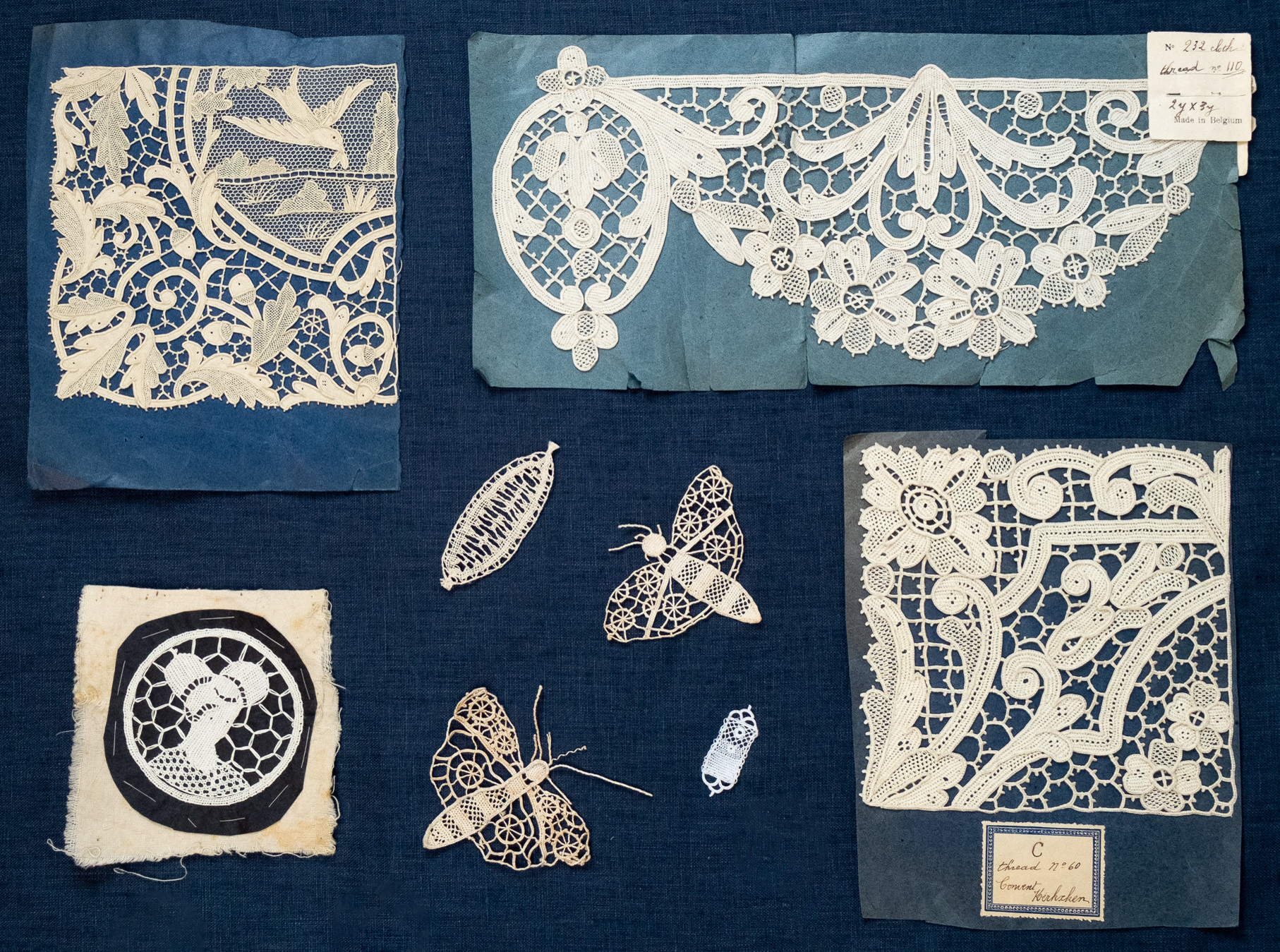
Intricate, delicate, and deeply compelling, lace is a fragile textile where patterns and images are expressed in thread on an open, web-like structure. There are many forms of lace; it can be stitched, woven, knit, crocheted, and embroidered. Shortly after lace emerged in the 15th century– in Italy and Flanders, the exact location being a point of some dispute– it became a thriving industry. Because it is a highly labor intensive process, the demand for lace required ever increasing numbers of lace makers. Lace schools and workshops emerged around Europe, many developing their own distinct styles and methods for making lace.
Beginning in the 18th century and continuing until the early 20th century, lace making was a crucial industry in Ireland. It continues to be an important aspect of traditional Irish needlework: a heritage craft shaped by centuries of social, cultural, and political movements across the country. On Friday, July 12th and Saturday, July 13th, Tatter will host an in person class by Irish needle lace artist Fiona Harrington. In addition to a lecture on the history and importance of Irish needle lace, she will teach students four types of Kenmare needle lace stitches. Students will create a needle lace sampler, approximately 1.5 x 4 cm, and will leave with an understanding of how to prepare a pattern, create a needlepoint lace sampler, remove their piece from the backing, and ‘clean’ the lace.
In advance of her transatlantic trip to New York this summer, we spoke with Fiona about her personal history with lace making as well as the basic history of lace in Ireland. You can read our conversation and sign up for the class below.
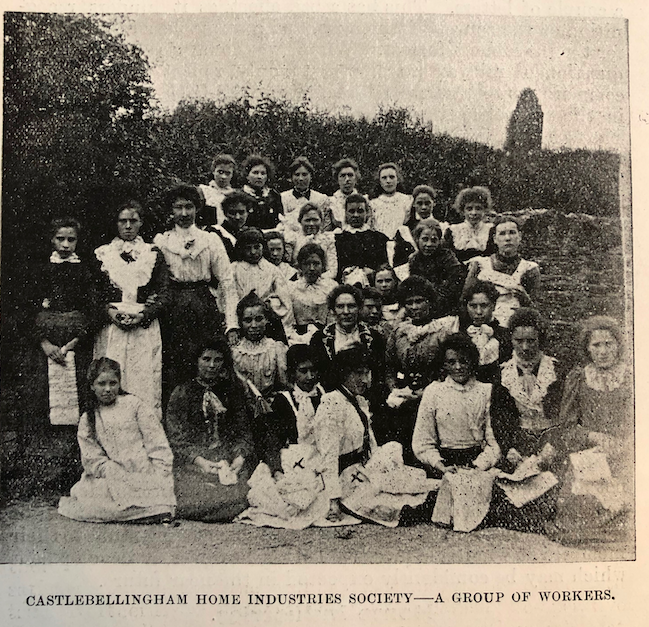
When did you start making lace?
I started making lace in 2012. I was studying textile design at the National College of Art in Dublin, and the summer between third and fourth year, everybody was encouraged to do some kind of an internship to gain industry experience. There were a lot of people in the course interested in fashion and interiors and that kind of thing. I wasn’t at all. My background was always in visual arts. That year, I had gone to see a lace exhibition in Birmingham. It was kind of contemporary art, but based on lace, and it really sparked my interest and started me thinking about lace-making. It actually triggered a memory that I’d forgotten, about my mother making lace. I knew there was a history of lacemaking in Ireland, making Irish lace, and I started researching it. That brought me down a rabbit hole that I never got out of.
From what I understand, lacemaking worldwide– but also very much in Ireland during colonialism– is one of the first notable examples of oppression in order to facilitate the mass production of textiles.
It’s interesting that you should say that, because when I was researching for my thesis on lacemaking there was a book I read, called the Irish Flowerers, which would argue that lacemaking was the first form of fair trade.
Because it was such a high standard of work, and because it was so sought after, lacemakers actually received a relatively fair payment for their work. But I also know what you mean, and people often make the opposite argument. In Ireland, for example, they used to make women who were incarcerated in Magdalene Laundries make lace. So there’s two sides to this coin and I’m really interested in both.
The Magdalene laundries and mother and baby homes, I know, oftentimes did not pay the women at all. Was it the same with the lacemakers?
If they were employed as a lacemaker, they would have actually been paid, unlike the laundries. Lace schools used to exist all around Ireland. Actually, after the famine, the lace schools were a lifesaver. They were the only place that people could get employment. There was no employment for men, but women were able to go to the lace schools to learn how to make lace for export. So they were able to earn a living, and in that sense as well that was a great source of independence for women because it was women who were putting the food on the table and keeping the families from starving. I’ve heard so many stories of lacemaking being so liberating. And then I’ve also heard of it being so oppressive and lacemakers being completely exploited. I’m interested in both of the histories.
There was also massive amounts of child labor in the early 19th century. Limerick had a roaring lace industry for the first half of the 19th century, with big factories you know, at one point they employed over a thousand women in Limerick making lace, which is a huge number for the area. There’s also lots of records of small children in these factories making lace. But then, as employment laws became stronger throughout the later half of the century and the early 20th century there were fewer and fewer children employed. Ireland was actually one of the very few countries that single women could emigrate from, mainly because they were able to earn enough money from making lace to pay for their fare.
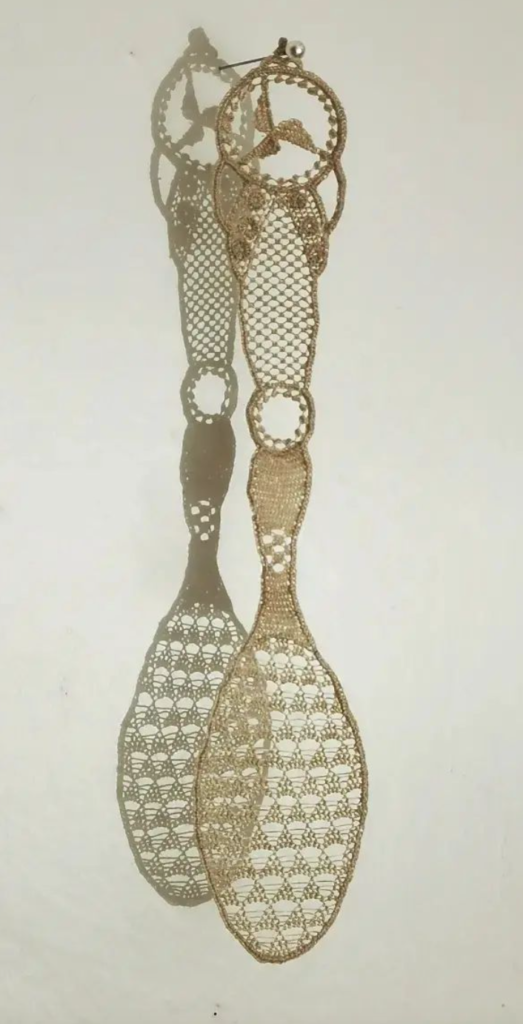
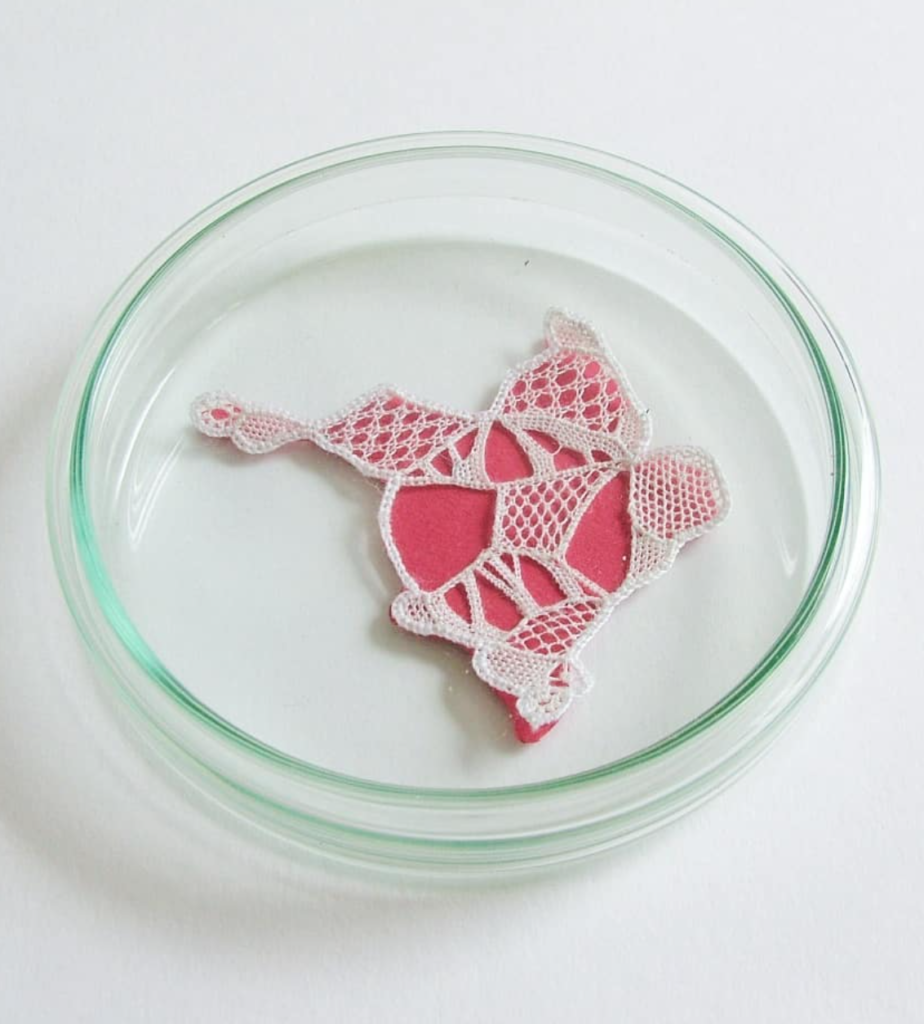
When did lace making in Ireland start to fall off?
Around World War One, in the early parts of the 20th century. There were a couple of things, mainly- there was the war and also, machine made lace became really really good quality. That marked the end of the industry as we knew it. In Ireland, there’s still some records of lacemakers being paid after 1915 and but they’re few and far between, and it really survived after that as a cottage industry. After that it became something that people did for enjoyment rather than income. It became something that women felt very proud of, and something that they wanted to preserve. They taught their children, who taught their children, and so on. They often created these heirloom pieces, such as a wedding veil or a christening robe, which would have been cherished and kept and passed down. Holding on to that important bit of history in whatever way that they could. There have been a few revivals and revival attempts that were relatively successful, because we do still have lacemaking in Ireland. In the 1960s, we had the likes of Sybil Connolly, who’s a pretty famous fashion designer, who was using traditional lace in all of her designs. She would have worked closely with lacemakers here in Ireland. There have also been various kinds of smaller local revivals of regional laces, such as the revival of Kenmare Lace in the 1980s which was started by Nora Finnegan. The revival of Clones lace by Maire Treanor in or Country Monaghan and in Limerick. So you’ve got all these different kinds of revival movements where people get together and chat, share skills, and learn.
So what drew you to lace, other than the family connection?
That’s a difficult question to answer, because I feel like it was very much a journey. In a way, I feel like I was meant to go down this path. Once I kind of remembered that piece of family history, I felt like I had some kind of ownership over the practice. Like I was allowed to practice it and I was allowed to learn it. And then even when I went to do my internship, I never really had any intention of ever being like a lacemaker or even using lace in my work. I just wanted to understand it a little bit more. Then, in the quietness of the lace center in Kenmare where it was basically just me and my teacher in this kind of part shop, part Museum, part school. It was quite contemplative, and I was learning these teeny, tiny, stitches. You just become so focused on what you’re doing. In those moments, I realized the importance of what I was doing and the importance of what was contained in those stitches. The history, the story, and everything else. I started to rethink what I could do with lace. My original idea was that I would learn about these techniques and incorporate it into my visual arts practice. Then I started to think, well, why do I feel like I need to make work based on lace? Why can’t I make work using lace, why can’t lace be my creative medium?
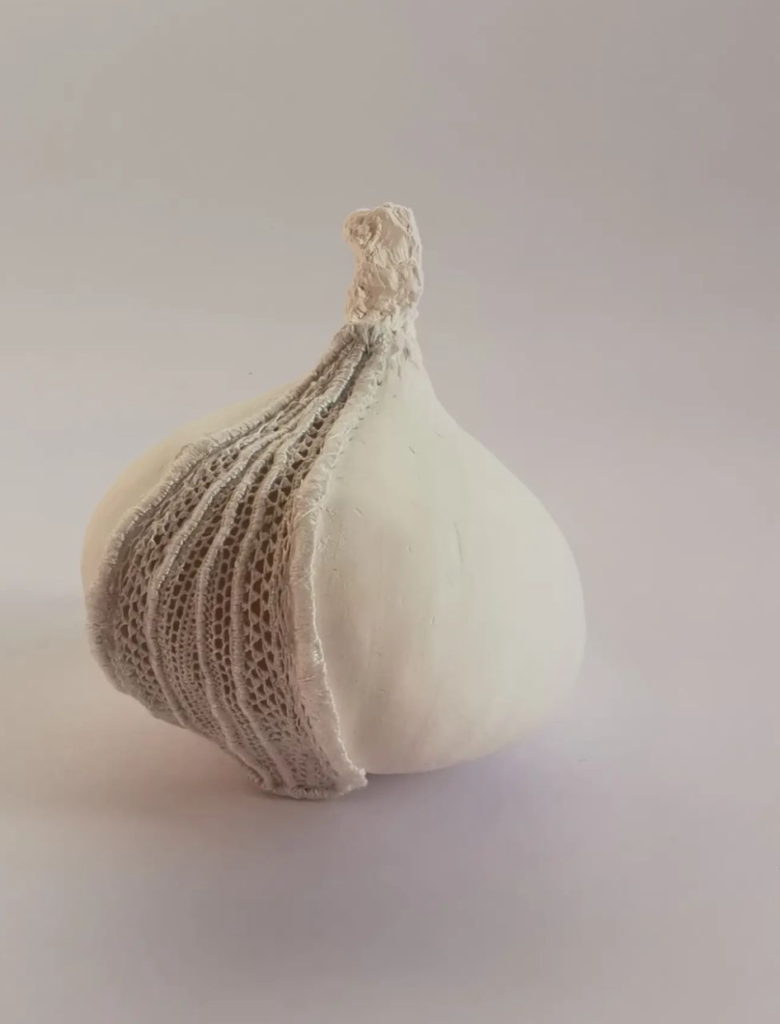
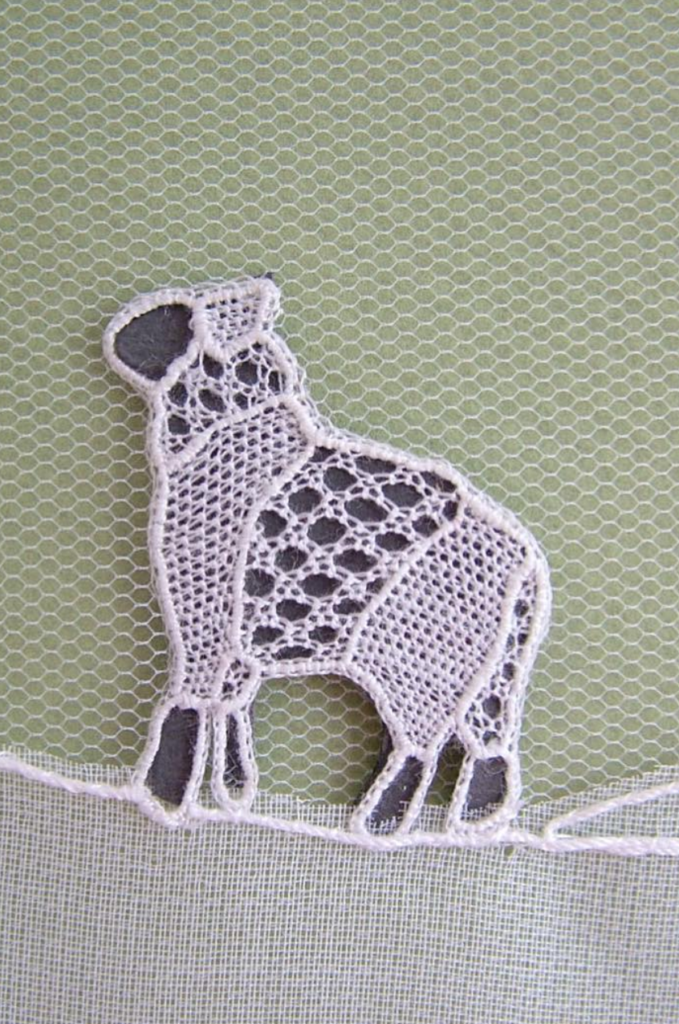
What was the response towards your focus on lace? Were people immediately into it, or were they asking those same questions you had been about why you would focus just on lace?
Strangely enough, I have been working as an artist for over 20 years, and for the first 10 years I was working as a painter. When I look back, it’s like I never really felt like anybody had any interest in my paintings. There’s just so many painters everywhere, there’s nothing unusual about us. But when I started making lace, it just seemed like doors opened up for me. It just felt like it was a more welcoming space, and I felt like I was able to fit in there. Even in college, nobody else was doing lace. They weren’t focusing on the technique. My tutors were really supportive of me, to the point that I was kind of completely left to my own devices. That suited me down to the ground. I was just able to sit there making lace for my final year and nobody came near me. After that, I just jumped into it. Once I finished my degree, I moved down to the Beara Peninsula which is a really remote part of Ireland, and it’s near where I learned lace. I moved down there to completely focus on developing this new strand of my practice in the middle of nowhere with very few distractions.
All of that work is just completely reflective of where I was at the time. I created all of these collections where I basically made little snapshots of the landscape that I was living in using this very traditional Irish lace technique. It was this quintessential Irish artwork, in some ways. I was basically just taking the techniques and applying them in the same way a painter would create a painting, but instead of paint and a paintbrush, I was using a needle and thread. I quite enjoyed that, but like every single artist, I’m always pushing myself and thinking about something else so I started to work a little bit more with sculpture. I had all these wonderful plans for my MA project in 2019. And then in March 2020, COVID hit. So I spent the rest of my MA in this room, on my computer, unable to leave the house. I was researching the Irish lace industry and various other female-led industries in Ireland. The other primary industry, other than lace making, was poultry keeping. I made a piece of artwork for my MA project where I got 21 broken egg shells and designed a piece of lace to fit the contour of each egg shell, and then connected the lace to the shell. It was the most ridiculously delicate piece of work I’ve ever made in my entire life. I still can’t believe I made it.
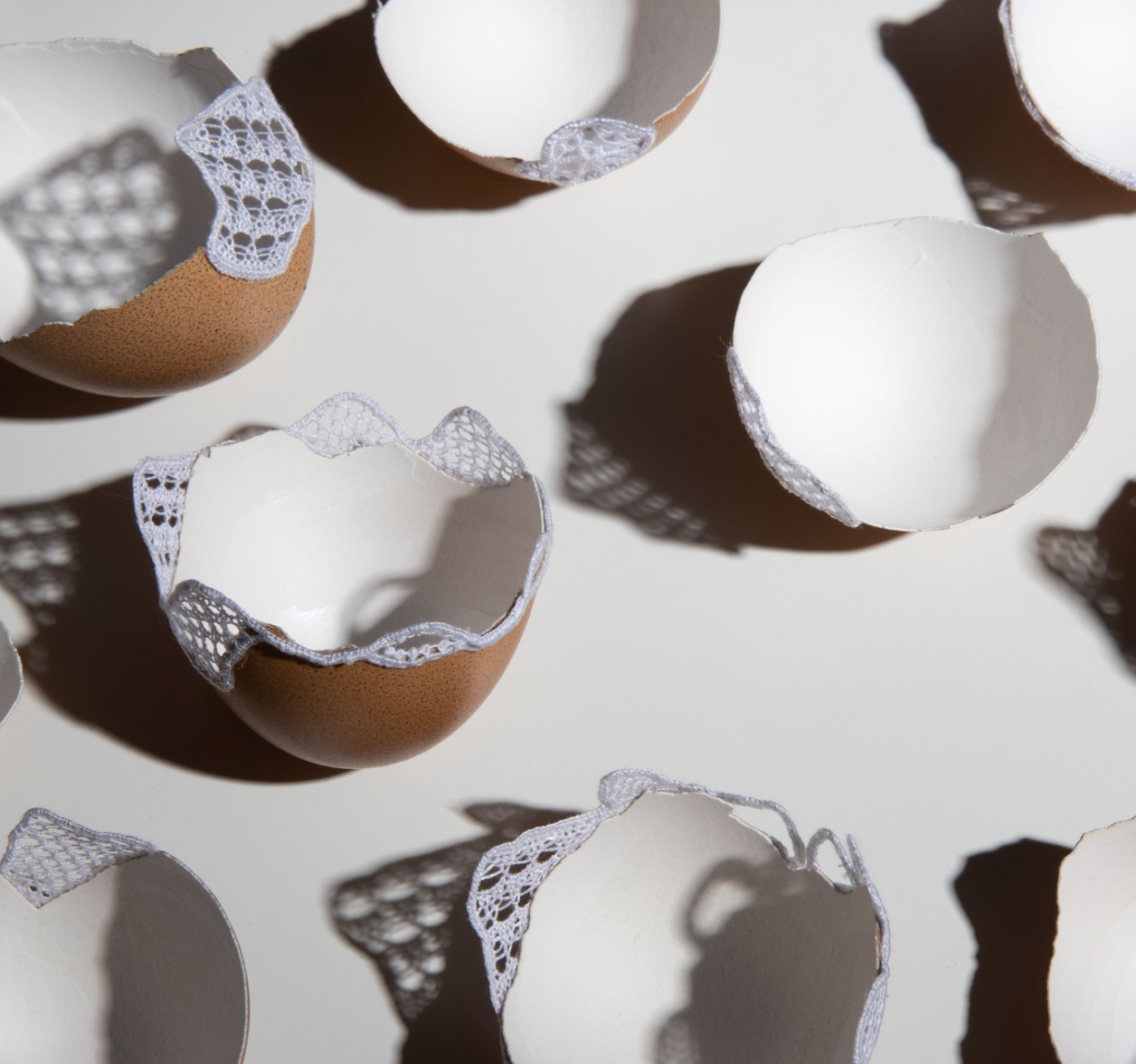
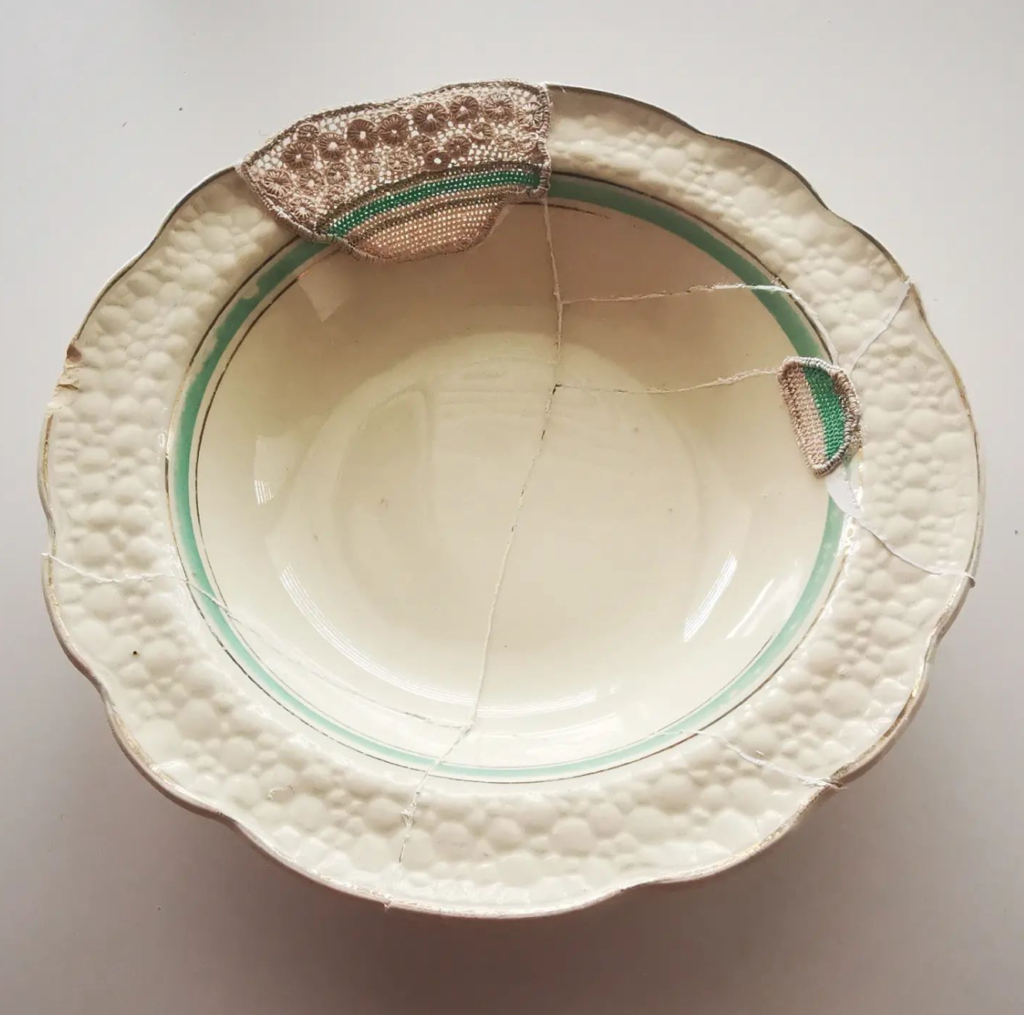
You were speaking about the feeling of ownership that you had over lace because of your mother. How do you feel about teaching needle lace to people who don’t necessarily have that sort of background or understanding?
I love it. I was actually doing a demonstration last night in the National Gallery as part of a Flemish exhibition that they have on, so they had various different events happening including my lace making demonstration. For the entire time that I was there, the table was just surrounded by people. People see lace and think “God, isn’t that lovely?” And then they see how lace is made and they’re like “Oh my God! Amazing.” I love that process of being able to show people how lace is made because they get so much greater understanding of what exactly is involved in it. Textile making, or hand stitching, or anything handmade, people are just fascinated. I think there’s been a big revival in that kind of interest in recent years. So for me, I just love sharing the history, the knowledge, my own passion for it. I just love talking about it. That is exactly where I want to be, that is where I’m happy. Just talking about lace all the time.
FURTHER READING AT TATTER
Lace by Virginia Churchill Bath (Call #: TT800.B25)
Masterpieces of Irish crochet lace : techniques, patterns, instructions by Thérèse de Dillmont (Call #: TT805.I74.D55)
Needle-made laces : materials, designs, techniques by Pat Earnshaw (Call #: TT805.N43.E27)
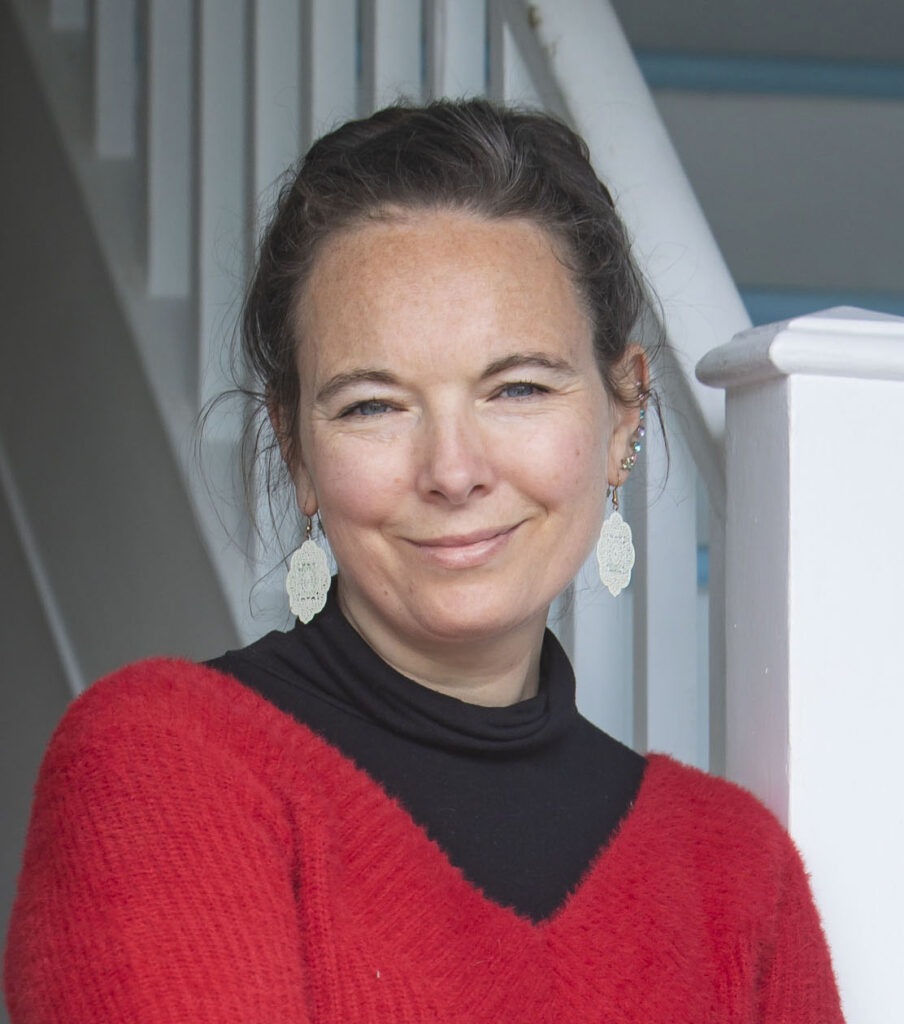
OUR TEACHER
Fiona Harrington
Fiona Harrington is a visual artist who uses handmade lace as an integral part of her practice. She studied Fine Art at Crawford College, Textile Design at NCAD, Lacemaking at the Kenmare Lace and Design Centre and completed an MA in Art and Research Collaboration at IADT, Dún Laoghaire.
She has been the recipient of the Thomas Damann Bursary, RDS Graduate Prize, National Craft Award, Eleanor De La Branchardiere Prize, Traditional Lacemakers Award, Percent for Art Commission and the reimagined Branchardiere Bursary in 2021.
Fiona’s work has been exhibited widely and was included in a 3-person exhibition, Lace, Paint, Hair at the National Gallery of Ireland in 2020. In 2022 she was an invited artist for Soft Things in Hard Times at the Olivier Cornet Gallery and she has exhibited as part of annual exhibitions at the RHA, Cairde Visual Arts Festival, DLR Lexicon and Visual Centre for Contemporary Art.
She has travelled extensively giving talks and demonstrations on Irish Lace. In 2018 she spoke at the Textile Arts Centre in New York, Straight Out of Ireland Exhibition in Philadelphia in 2019 and was invited to present her work at the Home/Making Symposium at Concordia University, Montreal in May 2023. In 2024, she will travel to Tennessee, to teach at the International Organisation of Lacemakers annual convention.
In 2021, she represented Ireland at Doily Free Zone, an international symposium exploring lacemaking in contemporary art and design. The same year she was selected to the Michel Angelo Foundation’s Homo Faber Guide, which celebrates European excellence in craftsmanship, where she is currently one of only 4 lacemakers in Europe to be featured.
Most recently, she was awarded the Firestation Sculpture Practice Award, where she is exploring combining handmade lace with mould making, casting techniques and wire sculpture.
